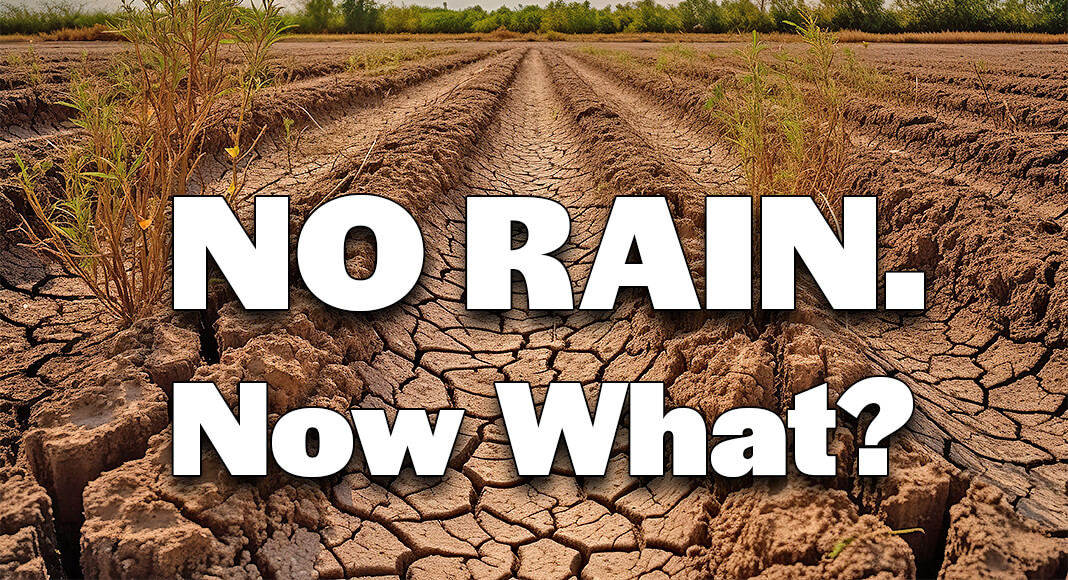
Texas Border Business
Hurricane Beryl approached South Texas and deep Texas, and residents and meteorologists held their breath in anticipation of much-needed rainfall. The hopes were high, particularly for the parched regions around Lakes Falcon and Amistad, where water levels had been critically low. However, despite the initial forecasts, the expected deluge failed to materialize, leaving many wondering: what happened to the rain?
Hurricane Beryl was initially projected to bring substantial rainfall to South Texas, potentially alleviating the severe drought conditions. Early models showed the storm making a direct hit, promising to replenish water supplies and relieve agricultural areas suffering from months of dry weather. However, as Beryl moved closer to land, the storm’s path shifted unexpectedly.
Meteorologists explain that several factors contributed to the sudden change in Beryl’s trajectory. A high-pressure system over the Gulf of Mexico pushed the storm further east than anticipated. Additionally, dry air from the north weakened Beryl’s intensity, causing it to dissipate faster than expected upon landfall. Consequently, the heaviest rains fell over the Gulf of Mexico and the eastern coast, sparing South Texas from the soaking it desperately needed.
The Impact on Lakes Falcon and Amistad
The water levels in Lakes Falcon and Amistad have been a significant concern for local communities and authorities. These lakes are crucial for irrigation, drinking water, and recreational activities. With the promised rain failing to arrive, the situation remains dire.
Lake Falcon spans the border between the United States and Mexico and has been historically low for months. The lake’s capacity has decreased to just a fraction of what is needed to support the surrounding agricultural regions. Similarly, Lake Amistad has seen a sharp decline in water levels, impacting local wildlife and reducing water availability for nearby towns.
The Road Ahead: Managing Expectations and Preparing for the Future
With the disappointment of Hurricane Beryl still fresh, South Texas must now turn its attention to alternative strategies for water management and drought mitigation. Here are some steps that can be taken:
- Water Conservation Measures: Local governments and residents must intensify water conservation efforts. Simple measures like fixing leaks, using drought-resistant plants in landscaping, and limiting non-essential water use can make a significant difference.
- Investment in Infrastructure: Upgrading water infrastructure to reduce waste and improve efficiency is crucial. This includes repairing aging pipelines, expanding water recycling programs, and developing systems to capture and store rainwater during wet periods.
- Enhanced Forecasting and Planning: Improving the accuracy of weather forecasts and investing in advanced meteorological technology can help better predict storm paths and rainfall amounts. This allows for more effective planning and response strategies.
- Drought-Resistant Agriculture: Encouraging drought-resistant crops and modern irrigation techniques can help farmers manage water resources more effectively, ensuring food security even in dry conditions.
- Community Education and Engagement: Educating the public about the importance of water conservation and involving communities in drought preparedness efforts can foster a culture of sustainability and resilience.
The unexpected shift in Hurricane Beryl’s path and the resulting lack of rain have accentuated South Texas’s challenges in managing its water resources. While the disappointment is palpable, it also allows the region to reassess its strategies and build a more sustainable and resilient future. By embracing conservation, investing in infrastructure, and planning proactively, South Texas can better navigate the uncertainties of climate and weather in the years to come.












